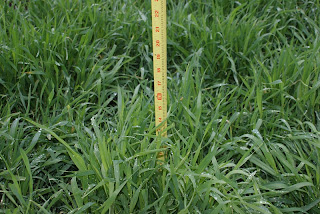I just wanted to post a few pics of where we are up to this date. Everything is coming along quite nicely. We've got a lot of maturing plants in the garden, even before some people have started.
Our Broccoli row has onions, chard, dill, cilantro and broccoli. We're trying to get double the production in the same space by planting the broccoli two to a spot. One plant is about 3 weeks behind the other, so shortly after harvesting the first crowns and cutting down the finished broccoli, the second batch of plants will be able to take advantage of the now available sunlight, giving us another crop from the same patch. I'll let you know how it goes.
The lettuce row is actually half lettuce and onions, half potatoes and radishes. We have a few varieties of lettuce including crisp head, butter crunch, and many leaf types. It's planted thick as you can see, which means lots and lots of delicious young leaves for your fresh salads. Thin & harvest all at once.
The garlic, which was planted last fall, is coming along nicely. Some of these plants have a stem nearly an inch in diameter, and they are growing very vigorously.
That's it for now, more updates to come.












